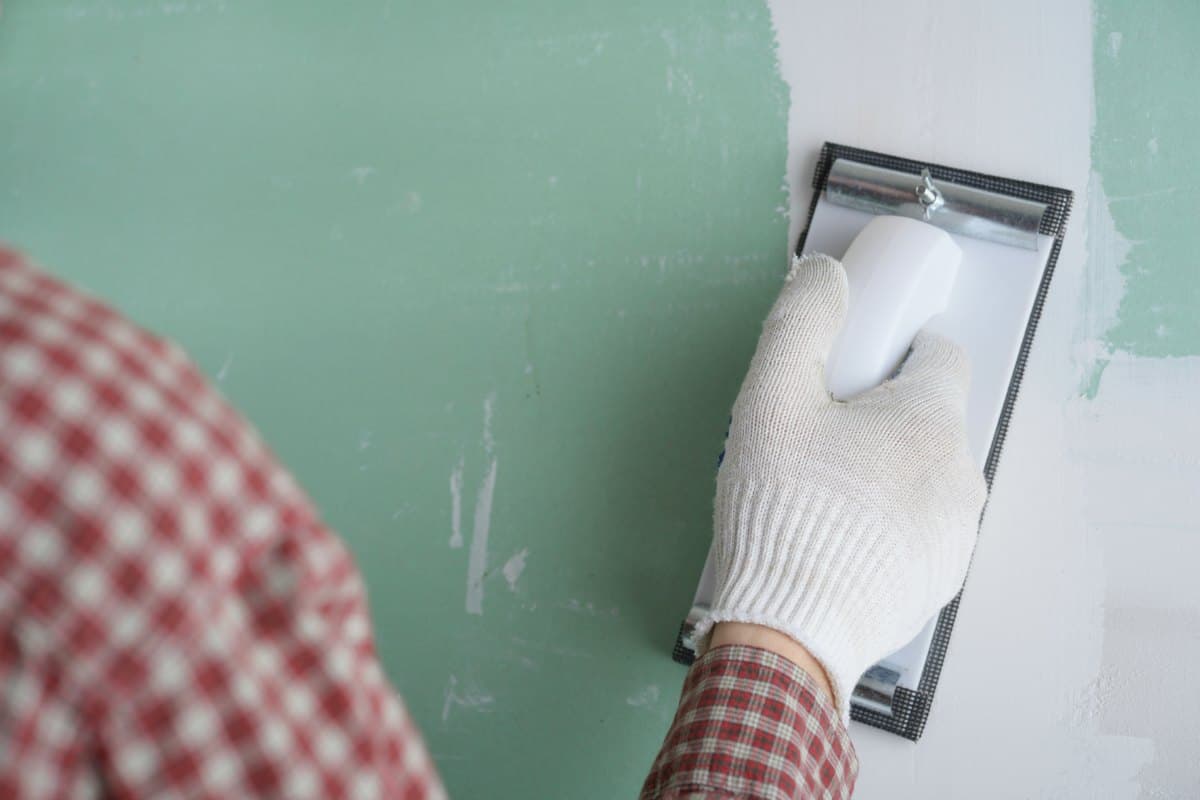
Purchasing a home often means making a few repairs or upgrades before or after moving in, if for nothing else than to add personal touches that make your home feel like your home. Beyond the usual painting and hardware replacements, drywall repair is one of the most common cosmetic fixes homeowners need to make.
Repairing drywall is a pretty simple process, depending on the severity of the damage. Even large holes can be fixed with relative ease; these repairs just require a few additional steps.
1. Evaluate the Repairs Needed
In some cases, a wall has a few nicks and dings that can be easily patched with a bit of fast-drying spackle and sandpaper. These repairs can often be completed by simply dabbing on a bit of touch-up paint over repaired surfaces rather than repainting the entire wall. Larger holes may require a patch kit or more complex repairs.
2. Determine Whether You’re Faced With Problem Drywall
If the drywall was installed between 2001 and 2009 (if you have this information), determine whether the home has problem drywall. If it meets the criteria, follow the Consumer Product Safety Commission’s guidance on remediation.
3. Repair Surface Cracks With Drywall Compound
Surface cracks usually occur along the seams where two pieces of drywall meet. These cracks, if they don’t extend beyond the tape covering the seam, can be simply filled with drywall compound. When the compound dries, lightly sand the area and re-paint. Deeper cracks can be repaired using the same process, strengthened by placing fiberglass tape over the seam while the compound is still wet.
4. Repair Small Holes With Putty, Sanding and Spackling
Larger holes are also fairly simple to repair, although there are a few more steps involved. Most holes can be filled with painter’s putty (level to the wall surface) and then lightly sanded when dry. Spackle is applied next and allowed to dry, sanded, and then the wall may be re-painted.
5. Repairing Larger Drywall Holes Using a Patch
If the hole is larger, a patch is used to cover the hole before the putty is applied. Holes too large for a drywall metal patch (often used for holes up to six inches) require a patch made of drywall, which must be the same thickness as the existing drywall. After the patch is applied, the same process of filling the area with putty, sanding the area lightly, and applying spackle is used.
No matter the size or number of cracks or holes, it’s possible to repair drywall leaving no evidence that the wall was ever damaged, particularly if the entire wall is re-painted. If you’ve repaired a large area (or multiple areas) or the existing paint is older, it’s a good idea to paint the entire wall with primer and a few coats of fresh paint for a flawless finish.


























 United States
United States Canada
Canada